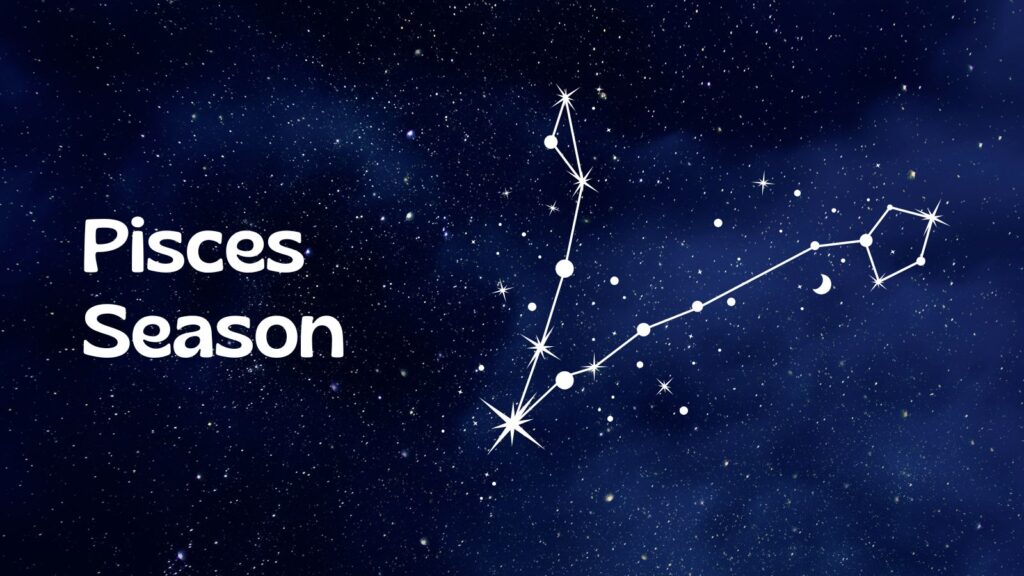The
following is excerpted from the upcoming book All These Serious Faces Will
Only Drive You Mad. This is the second
excerpt to appear on Reality Sandwich. Read excerpt 1 here, 3 here, 4 here. To learn more about the book, please click here.
The twentieth
century was littered with warnings about the rise of technology and machinery
in society. This became the general context for how we thought about
"dehumanization," whether we were talking about manufacturing cars by robot
instead of manpower, creating music with synthesizers instead of traditional
instruments, or communicating by text message instead of talking face-to-face.
But discussing whether these phenomena are "good" or "bad" won't be of much use
without a proper understanding of how the human
being has been "dehumanized." To find that, we need only look at the
supposed epitome of post-modern life in the West, the realm we call suburbia.
Suburbia is
merely one arm of a machine — one part of a bigger process, from which all other
parts (e.g., pollution, deforestation, Third World plundering, etc.) are largely
invisible. In that way, the suburbs are like a veil drawn over the broader
reality of the world we live in, contributing much to our feeling of
"unreality" over the past seventy years. This low-density living arrangement
appeared as an alternative to the hustle and bustle of the urban environment.
But really the suburbs are built on the same principles of mechanization that
exist in the city. This machine runs on an addiction, which is to say that
humanity is addicted to a process of dehumanization. And since these
detrimental aspects are so hidden from view, suburbia poses one of the greatest
threats to our survival as a species.
We had hoped that
this mechanized life would be better than the kind that came before it. Now
we're forced to live with it no matter how we feel. After all, we have to make a living. And honestly, what would
we all do if we didn't have jobs? We'd just be bored all day long, wasting our time watching TV…right? Really? Or
are we dependent on a system that demands our servitude in exchange for another
day of life, so we tell ourselves it's a necessary system in order to evade the
straight jacket?
The word "addiction" carries a
connotation of narcotic drugs, but chemical addiction is only one type among
many that proliferate today. Psychological addiction — particularly the kind
built on bio-survival anxiety — may be an even more dangerous type, especially
when it happens without the slightest bit of awareness on the part of the
victim. Since all types of addiction share certain dynamics, it would be to our
benefit to examine the case of "traditional" junkies.
William S.
Burroughs, a founding writer of the Beat Generation, developed an opiate
addiction (starting with morphine) by at least 1944. (1) In an introduction to
his 1959 novel Naked Lunch included
in the "Restored Text" edition, Burroughs
gives a brief rundown of the "junk" system — the illicit opiate market, including
heroin, morphine, and other drugs of that class — to help explain his intentions
for writing such a gritty book. Though he sticks to a discussion about drugs,
one can't help but wonder if he intended it to be a microcosmic view of capitalism
itself. Burroughs writes, "Junk is the mold of monopoly and possession," (2)
and he marks three principles of the business:
1. Never give
anything for nothing.
2. Never give more
than you have to give (always catch the buyer hungry and always make him wait).
3. Always take
everything back if you possibly can. (3)
All it takes is a
perceptive eye to see junky behavior in any shopping mall in America. We could
even call the shopping mall the dominant paradigm of suburbia, where people try
to buy a sense of personal worth — a
temporary "fix" that only lasts so long. The utmost example is likely that
gross display of consumer frenzy we call Black Friday, when people trample each
other to get the best holiday deals after eating obscene amounts of food. More
generally, a good shopping find momentarily cures that ailment of feeling incomplete or unclean. One gains a sense of pride over a smart purchase, whether it's a stereo system on sale,
groceries discounted with coupon clippings, or even second-hand clothes at the
local thrift store.
While the popular
image of an "addict" or "junky" prevailing since the 1950s has been one of a
wraith-like creature wasting away physically, the factors behind junk really
correspond to a more universal economic system. Because of that, Burroughs
seems to have predicted our mega-mart culture of endless price cuts and absent
salesmen. "Junk is the ideal product… the ultimate merchandise. No sales talk
necessary. The client will crawl through a sewer and beg to buy… The junk
merchant does not sell his product to the consumer, he sells the consumer to
his product. He does not improve and simplify his merchandise. He degrades and
simplifies the client." (4)
Of course,
Burroughs didn't actually predict
today's consumer culture in the industrialized Western world, for this system
was already well established by the time he wrote his novels. Edward Bernays,
widely considered the father of the public relations industry, explains these
exact sort of tactics in his 1928 book Propaganda.
Before World War I, most advertising carried a tone of marketplace bartering in
which the marketing team used a fairly direct approach to highlight the
benefits of a product or service. Bernays's "new propaganda," on the other
hand, employed knowledge of group psychology and the hidden workings of society
to navigate a more sneaky route to the customer's wallet. "Instead of
assaulting sales resistance by direct attack," writes Bernays, the public
relations counsel "is interested in removing sales resistance. He creates
circumstances which will swing emotional currents so as to make for purchaser
demand." (5)
In an
introduction to Propaganda, Mark
Crispin Miller explains that the word "propaganda" only took on a negative
connotation after WWI, because the British and American governments used it in
heavy doses to maintain the appeal of Western democracy in opposition to the
rising fascist and communist governments. The fact that we now think of
propaganda as a despicable activity is "a paradoxical result of the war
propagandists' winning enterprise: for the propagandists had themselves
besmirched the word by using it always and only in dark reference to the enemy." (6) But originally it simply meant
disseminating information in support of a cause.
Miller also
points out that Bernays primarily lists examples from his own propaganda work
for clients, while using passive verbs to bypass the reader's suspicion. To get
the public to buy more bacon, Bernays hired doctors to promote it because of
how dependent people are on the advice of physicians. For a piano manufacturer
client, he suggested working with the real estate industry to put a music room
in newly built homes. The public relations counsel "appeals perhaps to the home
instinct which is fundamental. He will endeavor to develop public acceptance of
the idea of a music room in the home. …lifting the idea of the music room to a
place in the public consciousness which it did not have before. […] It will
come to [the homeowner] as his own idea." (7)
Bernays was busy
serving major clients throughout the 1920s, when companies such as General
Motors, Procter & Gamble, John D. Rockefeller, and General Electric paid
propagandists enormous sums of money to help turn public opinion in their
favor. The "new propagandists" had a few advantages. One was that, as Bernays
writes, "Men are rarely aware of the real reasons which motivate their
actions." (8) At the same time, people believe
that they know the reasons for certain — the result of a self-deception faculty
in the human psyche. Another advantage was that the new propaganda industry had
worked the psychological concepts of Bernays's uncle, Sigmund Freud, into its
arsenal. "It is chiefly the psychologists of the school of Freud who have
pointed out that many of man's thoughts and actions are compensatory
substitutes for desires which [he] has been obliged to suppress." (9)
Insights into
group psychology proved the most rewarding for the fledgling public relations
industry. "Trotter and Le Bon concluded that the group does not think in the strict sense of the word.
In place of thoughts it has impulses, habits, and emotions. In making up its
mind, its first impulse is usually to follow the example of a trusted leader."
(10) The universality of such a phenomenon suggests that individual human
beings tend to automatically surrender their own ability to make decisions — what
we'd call a rational thought process or problem-solving faculty — and instead
default to whatever leadership is in place.
Though the model
was still relatively vague, Bernays understood that a group reacts most to
clichés, symbols, and formulaic phrases. It didn't take long to turn this
knowledge into standard practice. "So the question naturally arose: If we
understand the mechanism and motives of the group mind, is it not possible to
control and regiment the masses according to our will without their knowing
about it?" (11) Bernays had been influenced by the ideas of journalist Walter
Lippmann, especially the notion that "the manufacture of consent" was required
to keep a modern democracy in functioning order. (12)
The overarching
point of Bernays's story is that, for almost 100 years now, an entire industry
has devoted its energies to turning the consumers of a capitalist "democracy"
into addicts who feel a psychological
compulsion to spend money on products and services, regardless of actual
necessity. Of course, because of the business interest at stake, it would have
been dangerous for the public to know anything about these tactics. Propaganda
formed a symbiotic relationship with any financially motivated organization
that depended on public opinion, be it government, corporation, or church. What
Bernays called "new propaganda" has now split into the roles of public
relations, advertising, marketing — even, to a certain extent, sociology and
legislative lobbying. So it's no stretch to say that psychological awareness among the public would have been a very direct
threat to all parties involved.
As a result,
students today are lucky if they get to take a single psychology class in high
school or college — and even if they do, it's an almost useless kind of
psychology with no real-life application whatsoever. That's evidenced by the
fact that allmost people know of Freud is the "id, ego, superego" model of the
human psyche — or his "oral, anal, and genital stages" of development. On
top of that, Freud's followers were a particularly dogmatic bunch who focused
almost entirely on repression caused by denied sexual impulses, lowering the
general appeal of psychoanalysis. Furthermore, most people haven't even heard
of Carl Jung or other important psychologists.
Luckily books
preserve the knowledge that we require to understand our predicament. Betty
Friedan's The Feminine Mystique
appeared in 1963, serving as a major contribution to the civil rights movement
that helped define the decade. Friedan noticed a strange paradox in which
American women — allowed for the first time in world history to vote, own
property, attend college, pursue a career, and generally develop as full adult
individuals — were continually being pushed into a very narrow role, both in the
family and in society as a whole. That role was essentially defined by a commercialized
image. Friedan asks, "Does the image by which modern American women live also
leave something out…? […] This image — created by the women's magazines, by
advertisements, television, movies, novels, columns and books by experts on
marriage and the family, child psychology, sexual adjustment and by the
popularizers of sociology and psychoanalysis — shapes women's lives today and
mirrors their dreams. It may give a clue to the problem that has no name, as a
dream gives a clue to a wish unnamed by the dreamer." (13)
Friedan notes
that the consumer culture was arranged in a way that not only made it difficult
for a woman to achieve her true potential; it also made it very easy for her to drop out of college, marry a guy with a degree
and job lined up, and start making babies. Yet at a time when everyone should
have been showing concern about such matters, Friedan saw this as a nearly unspeakable
topic. Friedan wonders, "Why is it never said that the really crucial function,
the really important role that women serve as housewives is to buy more things for the house. …the
perpetuation of housewifery, the growth of the feminine mystique, makes sense
(and dollars) when one realizes that women are the chief customers of American
business." (14)
While Friedan
sensed that "powerful forces" were engineering the mystique, she tried to
remain pragmatic as evidence piled up suggesting some concerted capitalist
scheme against women everywhere. She imagines corporate executives and
psychologists having a secret meeting and plotting to "stop this dangerous
movement of women out of the home," but then writes it off as an impossible
fiction. (15) Her opinion: "It was not an economic conspiracy directed against
women. It was a byproduct of our general confusion lately of means with ends;
just something that happened to women when the business of producing and
selling and investing in business for profit…began to be confused with the
purpose of our nation, the end of life itself." (16)
Friedan was
correct about the misplaced priorities of consumerism, but to say that no
secret meetings ever occurred might be too cautious. After all, in her imagined
scenario she lists some of the very companies that Miller mentions in the
introduction to Propaganda — General
Electric and General Motors in particular — who
actually had been running campaigns for decades, not only to turn people into
sedated consumers, but into ones with preferences that fit their own specific
business model. Since Friedan never once refers to Bernays, it seems that she
wasn't fully aware of the historical prominence of the propaganda field.
However, she did visit Dr. Ernest Dichter at the Institute for Motivational
Research, her account of which practically contradicts what she said before
about the unlikelihood of a conspiracy. She says Dichter, a man in possession
of 300,000 studies of individual consumers, was "paid approximately a million
dollars a year for his professional services in manipulating the emotions of
American women to serve the needs of business." (17) (At the time of my writing, that would
be the equivalent of slightly more than $7 million.) (18)
Dichter built his
business on the finding that American women influenced about three-quarters of
decisions on how to spend household money. His job was to maintain that figure
by creating the circumstances for women to feel fulfilled in their position as
housewives, whether it was a part- or full-time role. While he didn't actively
campaign against their efforts to seek work outside the home, he could heavily
sway their behavior inside of it. Primarily this was done by making home upkeep
activities dependent on buyable goods. "Properly manipulated…American
housewives can be given the sense of identity, purpose, creativity, the
self-realization, even the sexual joy they lack — by the buying of things." (19)
As one of Dichter's reports says, "The feeling of creativeness…is an outlet for
the liberated talents, the better taste, the freer imagination, the greater
initiative of the modern woman. It permits her to use at home all the faculties that she would display in
an outside career." (20) At the time, the desire for liberation in life and
work was flaring up among all groups who had been historically oppressed. So a
correlative goal was to make the housewife feel like a professional, as opposed
to a servant in her own home.
This propaganda
of the 1940s and ‘50s was really hinged on the need for security — or, to put it
another way, on the anxiety aroused
when a feeling of security was not obtainable. The manipulators took this
knowledge and directed their efforts at younger and younger cohorts. "It was
discovered that young wives, who had only been to high school and had never
worked, were more 'insecure,' less independent, easier to sell. These young
people could be told that, by buying the right things, they could achieve
middle-class status, without work or study. […] The main point now was to
convince the teenagers that 'happiness through things' is no longer the
prerogative of the rich or the talented; it can be enjoyed by all, if they
learn ‘the right way,' the way the others do it, if they learn the
embarrassment of being different." (21) And the methods of reaching these young
women were seemingly extracted right out of Bernays's handbook, with group
leaders, school faculty (teachers and guidance counselors), and TV
advertisements playing huge roles. "This is the big market of the future," as
Dichter says, "and word-of-mouth advertising, along with group pressure, is not
only the most potent influence but in the absence of tradition, a most
necessary one." (22)
While it may seem
like an outdated example, the methods used to manipulate the post-war housewife
are now employed to control every demographic. Television had pervaded America
by the time Friedan published her book, making it possible to sway the
perceptions of millions by appealing to the same "group leader" vulnerability.
Soon it was possible for everyone to "learn the embarrassment of being
different" by the time they got to kindergarten.
The most
effective tactics are the most invasive — that is, they dig deepest into one's
bio-survival anxiety and territorial ego drive, but without the target noticing. The propaganda comes gift wrapped in a
warm, fuzzy package — and only later do we discover the anthrax inside. This
public relations nightmare is a cannibalistic system that's eating away at our
dreams of an egalitarian society, piling shit on top of shit on top of shit,
selling souls to sell more souls to sell more souls. The difference between
Friedan's time and our own is that the middle class is now dissolving. But
given that the suburban middle class — what Friedan called the "Comfortable
Concentration Camp" — depended on the arrested development of millions of human
beings, that might not be such a bad thing.
Every new
generation raised in this environment experiences a more "unreal" version of
human life. Friedan notes this trend in her book: "I do not think it is a
coincidence that the increasing passivity — and dreamlike unreality — of today's
children has become so widespread in the same years that the feminine mystique
encouraged the great majority of American women…to give up their own dreams,
and even their own education, to live through their children." (23) This statement basically predicts the
coming of my own ADD generation. We can't figure out how to turn off the
machine, so it's only natural to want to flee. And since there's not much
possibility of an outward escape, we're fleeing inward — into our own
subconscious minds. Bernays's progeny started catching up with that in the
1980s, prescribing Ritalin and, later, Adderall, in an increasingly desperate
effort to keep us plugged into their machine.
When we look at
the consumer system around us, it's tempting to think that it was once a
healthy system, and that it suddenly got out of hand. But in reality that
consumer system was based on manipulative psychological tactics from the very
beginning — equivalent to building a socio-economic system out of a "junk"
addiction. As we evolve, we'll have to figure out how to outlaw the sort of
propaganda activities that turn us into dehumanized consumer-automatons — that
is, if we want to remain human at all.
If
you enjoyed this essay, please consider supporting Nick’s project. Click
here to learn more.
NOTES:
1. Charters, Ann. Kerouac:
A Biography. 1973. New York: St. Martin's Press, 1987. pp. 55-56.
2. Burroughs, William S. "Deposition: Testimony Concerning a
Sickness." Naked Lunch: The Restored Text.
New York: Grove Press, 2004. pp. 199-206.
3. Burroughs, W.S. Ibid.
4. Burroughs, W.S. Ibid.
5. Bernays, Edward. Propaganda. 1928. New York: Ig Publishing, 2005.
p. 77.
6. Bernays, E. Ibid. From the introduction by Mark Crispin
Miller. p. 14.
7. Bernays, E. Ibid. pp. 77-78.
8. Bernays, E. Ibid. p. 74.
9. Bernays, E. Ibid. p. 75.
10. Bernays, E. Ibid. p. 73.
11.
Bernays, E. Ibid. p. 71.
12.
Bernays, E. Ibid. From the introduction by Mark Crispin Miller. p. 13.
13.
Friedan, Betty. The Feminine Mystique. 1963. New York: Dell Publishing, 1984.
p. 34.
14.
Friedan, B. Ibid. pp. 206-207. Italics hers.
15.
Friedan, B. Ibid. p. 207.
16.
Friedan, B. Ibid. p. 207.
17.
Friedan, B. Ibid. p. 208. I found the names of both Dichter and the institute
in the footnote on p. 429.
18.
"CPI Inflation Calculator." Bureau of Labor Statistics. Accessed on 2/21/2011. http://www.bls.gov/data/inflation_calculator.htm
19. Friedan, B. Ibid. p. 208.
20. Friedan, B. Ibid. p. 214. Italics from original report.
21. Friedan, B. Ibid. p. 219.
22. Friedan, B. Ibid. pp. 220-221.
23. Friedan, B. Ibid. p. 288.
Image by katerha, courtesy of Creative Commons license.













